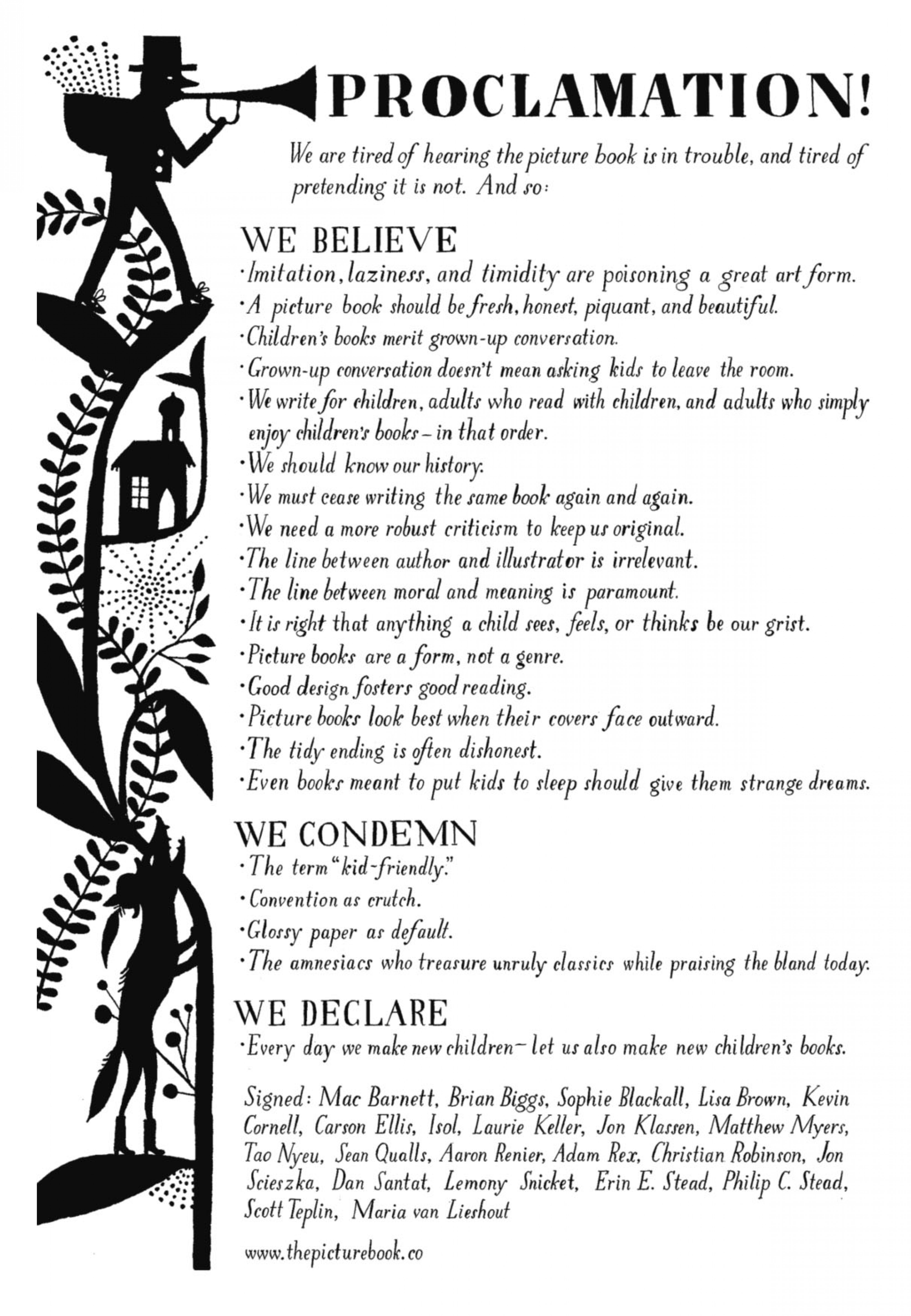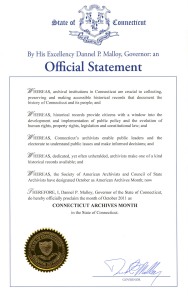Monthly Archives: October 2011
World Day for Audiovisual Heritage
The International Council on Archives has chosen today as World Day for Audiovisual Heritage. The purpose is to draw attention to the historical development of audiovisual media: cinema, photography, television, video and sound recording. Check out the poster outlining a timeline of audiovisual development in four languages. Modern archives contain vast quantities of audiovisual materials that document cultural heritage. Our knowledge of our national and local history is enriched by these records. For example, how limited would our understanding of our participation in World War II be without the “Man on the Street Interviews After the Attack on Pearl Harbor“, or of our developing cities at the turn of the 20th century if not portrayed in photographs made by the Detroit Publishing Company, all preserved at the Library of Congress. By preserving photographs, film and sound recordings, we can explore and better understand from where we have come. Celebrate our audiovisual heritage by visiting The UConn Story to investigate the University of Connecticut’s history through a variety of formats, watch the earliest UConn football and basketball game films and see college life as it once was in photographs in the Digital Mosaic.
Kristin Eshelman, Curator of Multimedia Collections
SideStream: What the Diablo?
The members of California’s Abalone Alliance must have thought just that as they continually resisted the proliferation of U.S. nuclear power plants—the Diablo Canyon plant in San Luis Obispo County being one of them—in the 1970s and ’80s. The Diablo controversy began in 1963, with the Pacific Gas & Electric Company’s proposal to build a nuclear plant in California. Anti-nuclear activists later learned that the company had not conducted sufficient seismic tests for fear of gathering information that would ultimately delay construction. What’s more, the plant was to be built 2.5 miles away from an earthquake fault. PG&E made this discovery in 1962 but neglected to inform the surrounding community about this safety concern (“Diablo Canyon, a history of cover-ups and resistance”).
Organized forms of civil disobedience—leafleting, peaceful protests, etc.—occurred under the direction and encouragement of the Abalone Alliance, an umbrella organization of over 60 groups, including the Los Angeles-based Alliance for Survival. In addition to promoting the Alliance for Survival’s Radioactive Times, the Abalone Alliance also distributed its own newsletter, It’s About Times. Both of these newsletters closely covered the developments at Diablo, and both also strove to spread awareness about the harmful effects of nuclear power. In fact the Times, whose main slogan was to deliver “All the news they never print,” went so far as to criticize the Reagan administration for its financial support of nuclear fusion research while cutting the budgets for energy conservation and solar energy (“Nuke Time for Bonzo”).
The opposition of the Abalone-affiliated groups was formidable. In 1981, 10,000 local citizens instituted a two-week blockade of Diablo Canyon, resulting in 1901 arrests. That year, it was also revealed that “PG&E used wrong blueprints when installing key seismic supports” (“Diablo Canyon, a history of cover-ups and resistance”). Whistleblower John Horn lamented: “I wasn’t exactly popular around the office then because most people thought I was just kind of nitpicking, and that I was stirring up trouble” (“Diablo Canyon, a history of cover-ups and resistance”).
Despite these protests, Diablo Canyon was granted an operating license by The U.S. Nuclear Regulatory Commission on November 2, 1984, and will maintain this license until at least November 2, 2024 (“Diablo Canyon Power Plant, Unit 1”). On its website, PG&E maintains that “Diablo Canyon Power Plant is a safe, clean, reliable and vital resource for all Californians” (“Welcome to Diablo Canyon”).
However, the work—the history—of these sometimes overlooked grassroots anti-nuclear groups is still preserved within the Alternative Press Collections at the Dodd Center today, waiting to be rediscovered by researchers and students alike.
Krisela Karaja, Student Intern
Resources:
“AA Safe Energy Groups.” It’s About Times: Abalone Alliance Newsletter [San Francisco, CA] Mid-June—July, 1980: p. 11. Print. Alternative Press Collections. Archives and Special Collections at the Thomas J. Dodd Research Center, University of
Connecticut Libraries.
“Abalone Alliance Newsletter: It’s About Times.” It’s About Times: Abalone Alliance Newsletter [San Francisco, CA] Mid-June—July, 1980: p. 2. Print. Alternative Press Collections. Archives and Special Collections at the Thomas J. Dodd Research Center, University of Connecticut Libraries.
“Diablo Canyon, a history of cover-ups and resistance: Do PG&E and the NRC Really Care About Safety?” [San Luis Obispo, CA] final edition, early 1984: p. 4. Print. Alternative Press Collections. Archives and Special Collections at the Thomas J. Dodd Research Center, University of Connecticut Libraries.
“Diablo Canyon Power Plant, Unit 1.” U.S. NRC: United States Nuclear Regulatory Commission. NRC, 24 June 2011. Web. 13 Oct. 2011.http://www.nrc.gov/info-finder/reactor/diab1.html.
“Nuke Time for Bonzo.” Radioactive Times [San Luis Obispo, CA] Summer 1981: p. 3. Print. Alternative Press Collections. Archives and Special Collections at the Thomas J. Dodd Research Center, University of Connecticut Libraries.
“Welcome to Diablo Canyon.” PG&E. Pacific Gas & Electric Company, n.d. Web. 13 Oct. 2011. <http://www.pge.com/myhome/edusafety/systemworks/dcpp/>.
October is Archives Month!
In conjunction with the Society of American Archivists and the Council of State Archivists, Governor Malloy has proclaimed October 2011 as Connecticut Archives Month. Exhibits, lectures and presentations abound. See what’s going on at the Dodd Research Center here.
Visit an Archives near you this month!
SideStream: To Drink or Not To Drink?
To drink or not to drink? This is a question most Americans rarely address, regarding the safety of their drinking water. Indeed, water contamination often appears irrelevant to us—a far-off issue confined to developing countries. However, as Jonathan King argues in his book Troubled Water: The Poisoning of America’s Drinking Water, instances of environmental contamination are far from isolated.
Written in 1985 by the Center for Investigative Reporting, one of the nation’s oldest nonprofit agencies covering crucial yet often neglected issues, Troubled Water raises awareness about contaminated groundwater. Burying toxic wastes is particularly harmful to groundwater –and, by association, drinking water—because chemicals “don’t readily disperse, settle out, or degrade” (King xi) at this level. Land disposal is a cheap, common, and sometimes significantly harmful waste management technique, as there is no way to fully ensure that the toxins will be kept from leaking into groundwater. In fact, “a leak of a single gallon of gasoline per day is enough to render the groundwater supply for a town of 50,000 people unfit to drink” (King xi).
Such contamination has had dire results in the past: the 1978 Love Canal scandal being one example. Despite warnings from Hooker Chemicals Co., schools and residential areas were built on and near a buried chemical waste site in Niagara Falls, NY. Wastes and toxins such as dioxin eventually spread as the water table rose—leaking into basements, sewers, and eventually area creeks. This contamination was also associated with an unprecedented number of health concerns among residents including miscarriages, birth defects, and the development of rare diseases.
Federal initiatives such as the 1980 Superfund program were established in the wake of these environmental scandals in order to hold polluters accountable after the fact. However, King suggests that the best way to seek environmental justice is for citizens to be proactive, so that environmental injustice never becomes an issue. He argues that “contamination has to be prevented before it happens” (173). He quotes Lois Gibbs, a prominent environmentalist and local leader in the call for action at Love Canal: “ ‘I’m really very optimistic. I see people moving, and I see things [i.e. citizen involvement] happening’ ” (180). If not, then, as Joel Hirschhorm—a 1980s Capitol Hill expert on toxic waste management—put it: “We will end up paying that [environmental] debt either with our money [in having to treat polluted areas] or our health” (qtd. in King xiv-xv).
Krisela Karaja, Student Intern
Resources:
“About CIR.” Center for Investigative Reporting. Center for Investigative Reporting, n.d. Web. 26 Sept. 2011. Center for Investigative Reporting
DePalma, Anthony. “Love Canal Declared Clean, Ending Toxic Horror.” New York Times 18 Mar. 2004. Web Archives. 26 Sept. 2011. http://www.nytimes.com/2004/03/18/nyregion/love-canal-declared-clean-ending-toxic-horror.html?pagewanted=all&src=pm.
King, Jonathan. Troubled Water: The Poisoning of America’s Drinking Water—how government and industry allowed it to happen, and what you can do to ensure a safe supply in the home. Emmaus Pennsylvania, Rodale Press: 1985. Print. Alternative Press Collections. Archives and Special Collections at the Thomas J. Dodd Research Center, University of Connecticut Libraries. Call number: APC Bk 389.
“Love Canal New York. EPA ID# NYD000606947.” EPA. United States Environmental Protection Agency, 25 Jan. 2010. Web. 26 Sept. 2011. <www.epa.gov/region2/superfund/npl/0201290c.pdf>.
Grace comes back to college
Grace Blakeman graduated from the Storrs Agricultural College, now the University of Connecticut, in 1896. After college, Miss Blakeman married fellow classmate Sherman W. Eddy in 1899. Active in the Congregational Church, a correspondent for the Hartford Courant, and a farm census taker, Grace died on March 26, 1919, of influenza. The portrait of Grace Blakeman (above) was painted by her cousin Fannie C. Burr of Monroe, Connecticut, and is presumed to have been painted in honor of Ms. Blakeman’s engagement to Mr. Eddy. The portrait was recently donated to the University Archives in recognition of Ms. Blakeman’s status as one of the first women to graduate from UConn.
Although UConn alums are always welcome to visit the University Archives, it is always a special treat when some of them (or their memorabilia) come to “stay” in the Archives and share their story with others interested in the history of the institution.
–Betsy Pittman, University Archivist






